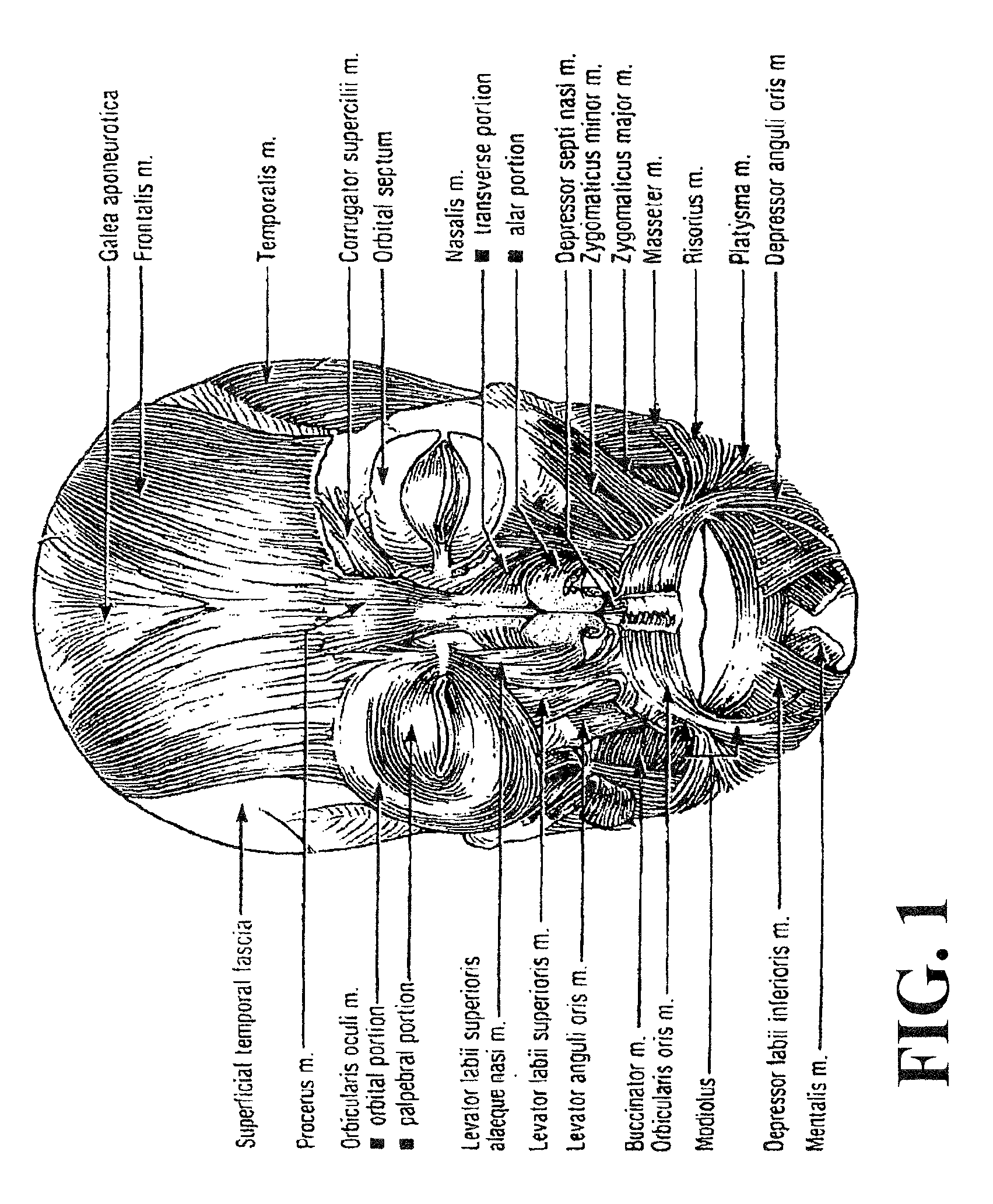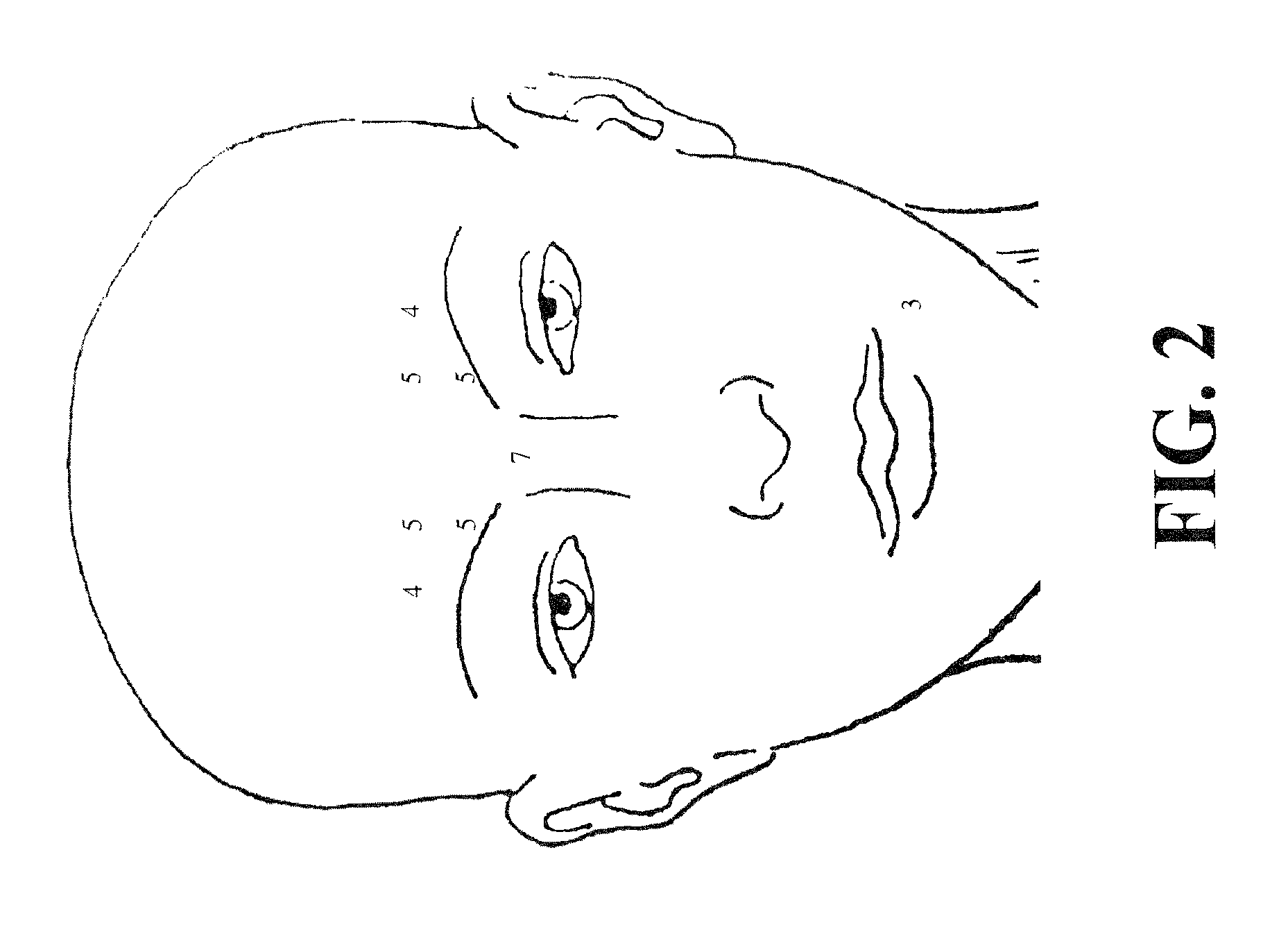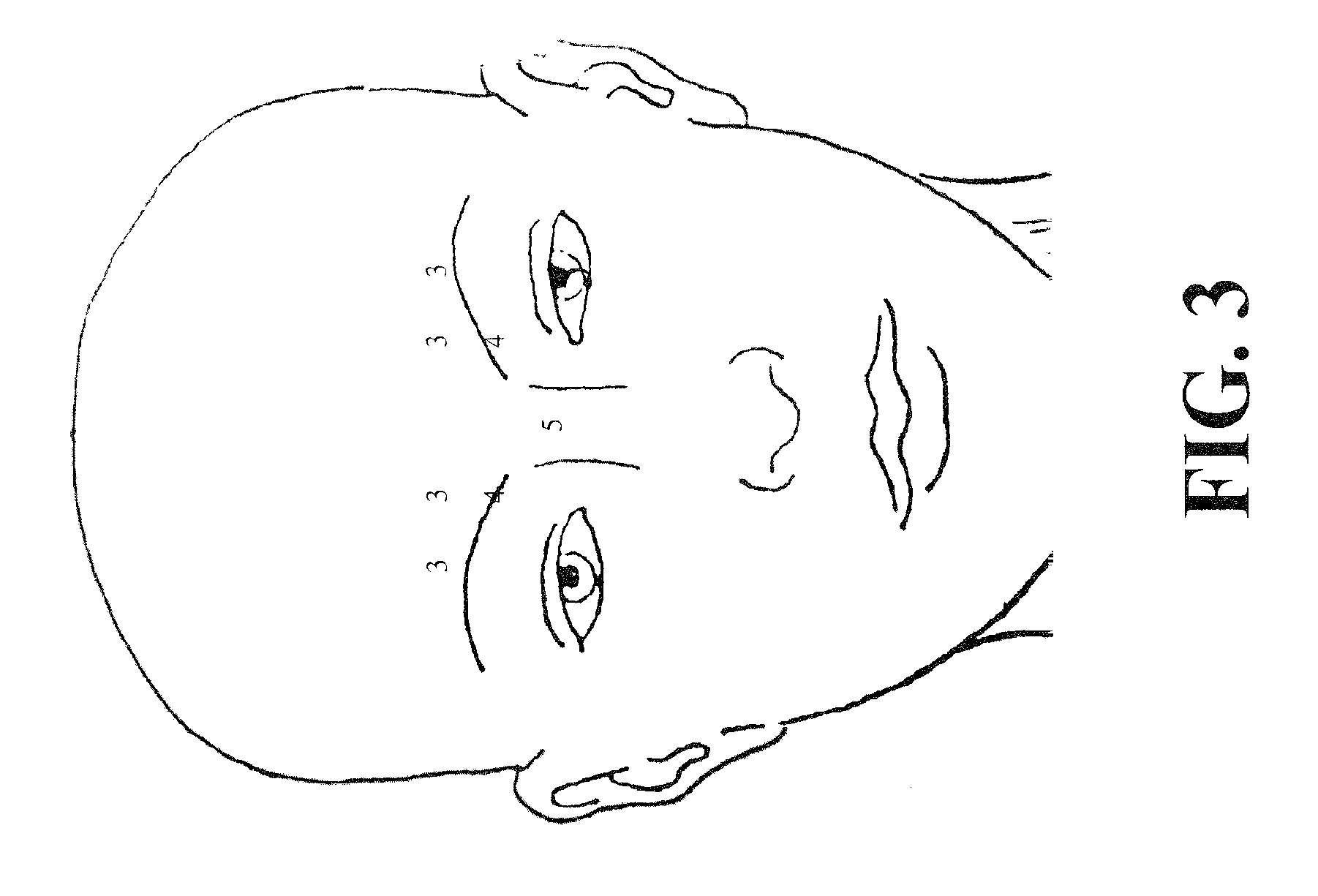Method of treating depression
a depression and treatment method technology, applied in the field of psychotherapy, can solve the problems of major source of personal suffering, impaired ability to engage in productive work and interpersonal relationships, loss of appetite and weight loss, etc., and achieve the effect of affecting the subject's ability to frown and/or scowl
- Summary
- Abstract
- Description
- Claims
- Application Information
AI Technical Summary
Benefits of technology
Problems solved by technology
Method used
Image
Examples
example 1
Patient 1
[0065]A 59-year-old Caucasian female with a history of depression for 3 years was treated. Medications included PAXIL® (20 mg), as prescribed by her psychiatrist. She appeared somewhat depressed at the time of the first office visit. Her glabellar frown lines and forehead lines were treated with 40 i.u. of BOTOX™ (FIG. 4).
[0066]Three months later the patient returned for re-treatment. The patient stated that she no longer felt depressed and she attributed her improvement in her mood to the BOTOX™. Her glabellar frown lines and forehead lines were treated with 40 i.u. of BOTOX™. In a telephone follow-up interview two months later, the patient reported feeling well and that she was no longer depressed.
[0067]This example illustrates that BOTOX™ injection can be used in combination with other treatment modalities (such as antidepressant medications, for example tricyclic antidepressants, serotonin specific reuptake inhibitors (SSRIs), norepinephrine reuptake inhibitors, monoami...
example 2
Patient 2
[0068]A 33-year-old Caucasian female with a history of intermittent anxiety / depression for ten years was treated. Her medications included an SSRI (ZOLOFT®, 200 mg per day) for the last four years. Prior to treatment she reported feeling depressed and anxious.
[0069]Her frown / glabellar lines were injected with 30 Unit equivalents of BOTOX™ (FIG. 5). Three months later she returned to the office for a follow-up appointment. She stated that she felt happier during the last couple of months than she had in years. Her frown / glabellar lines were re-treated at that time with 30 Unit equivalents of BOTOX™.
example 3
Patient 3
[0070]A 50-year-old, recently divorced, Caucasian female was treated. She had a history of depression for two years. Her medications included PAXIL® 20 mg orally per day and WELLBUTRIN® 225 mg orally per day. She reported feeling depressed.
[0071]Her frown / glabellar lines were injected with 30 Unit equivalents of BOTOX™ (FIG. 6). Four months later she reported a much-improved mood, and stated that she did not feel depressed. Her frown / glabellar lines were re-treated with 30 Unit equivalents of BOTOX™.
PUM
| Property | Measurement | Unit |
|---|---|---|
| Disorders | aaaaa | aaaaa |
| weight loss | aaaaa | aaaaa |
| weight | aaaaa | aaaaa |
Abstract
Description
Claims
Application Information
 Login to View More
Login to View More - R&D
- Intellectual Property
- Life Sciences
- Materials
- Tech Scout
- Unparalleled Data Quality
- Higher Quality Content
- 60% Fewer Hallucinations
Browse by: Latest US Patents, China's latest patents, Technical Efficacy Thesaurus, Application Domain, Technology Topic, Popular Technical Reports.
© 2025 PatSnap. All rights reserved.Legal|Privacy policy|Modern Slavery Act Transparency Statement|Sitemap|About US| Contact US: help@patsnap.com



